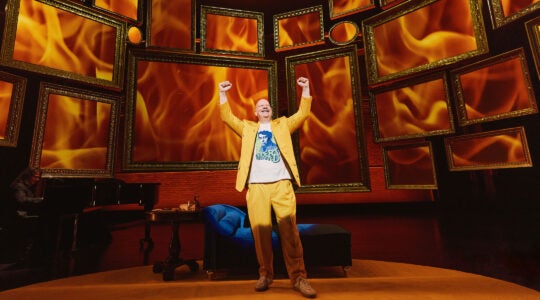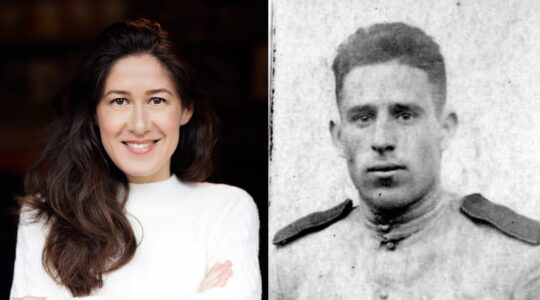How do you measure intellectual influence? Richard Posner, author of the hotly debated new book “Public Intellectuals,” rates 546 public intellectuals by media mentions, Web hits and scholarly citations from 1995-2000. Certainly, top scorers like Henry Kissinger (12,570) and Salman Rushdie (7,688) occupy large space in current public discourse, but what about someone like Robert Warshow, a cultural critic who died in 1955 at the age of 37? He nets a paltry cumulative score of 190.
“I am afraid I know too little about Warshow to answer any of your questions,” Posner wrote in an e-mail. “He is just a name to me.”
Yet Warshow is considered to be an inspiration by popular contemporary critics like David Denby. Writing mostly in Commentary and Partisan Review, Warshow was one of the first American intellectuals to take “Krazy Kat” and Charlie Chaplin as a fact of life and engage seriously with popular culture. Warshow refused to compartmentalize aesthetics and saw himself as simply one man in the audience, but his brand of deeply felt, anti-ideological criticism has been largely eclipsed by critical theory and cultural studies.
In a bid to add Warshow to the canon alongside cultural mandarins like Walter Benjamin, Harvard University Press last month reissued the posthumously published essay collection “The Immediate Experience: Movies, Comics, Theatre and Other Aspects of Popular Culture,” with eight previously uncollected book reviews.
Lindsay Waters, executive editor of the humanities at Harvard Press, hopes the expanded version will serve as a corrective to “cultural studies not being done very well. Scholarly writing is too distant from critical writing, but it wasn’t that way 50 years ago. Warshow is here to show us how well it can be done.”
Waters had been waiting for this opportunity since author and critic Louis Menand first told him about Robert Warshow 15 years ago. When Atheneum’s paperback of “The Immediate Experience” finally went out of stock, Waters jumped, working with Warshow’s son Paul Warshow and old friend Lester Migdal to find more writings and put out a new edition of about 4,000 copies. “I became possessed with this book,” Waters says. “Historic vistas open up when I read Warshow.”
Menand, on the other hand, doesn’t find the ideas in Warshow’s essays especially relevant today. “People ought to read good writing,” Menand says, but “Warshow’s very mid-century in his concerns. Criticism is very occasional and it’s very rare that it lives longer than its time.”
Perhaps Warshow would have gone neo-Conservative like so many of his peers, but he died fighting — as David Denby put it in the book’s introduction — “a war on two fronts” against anti-Communist McCarthyism on the right and Stalinism on the left, not to mention the rise of middlebrow culture like the plays of Arthur Miller. Squeezed on all sides, Warshow gasped for air to breathe cultural authenticity.
In addition to introducing Warshow to new readers, the publication has been an opportunity for Warshow’s friends to reanimate memories of a man known for his sense of humor, intellectual purposefulness and, most of all, a passion for the movies.
“In our teens, we were reading Thomas Mann,” said Martin Greenberg, a critic and the translator of Heine and Goethe who knew Warshow since he was a boy because his aunt lived next door to the Warshow family on Webb Avenue in the Bronx. “For the Jewish middle class, there’s a German word, kulturseligkeit, which means ‘culture bliss,’ ” he says. “Movies were a great relief from that.”
A year younger than Warshow (born in 1917), Greenberg followed his friend to the University of Michigan. There, Warshow helped establish a student literary magazine titled Contemporary and dreamed of a career writing criticism.
Did the two roommates go to the movies together? “Oh my God, did we! Especially at exam time,” Greenberg recalled with a grin. “I remember we once saw three movies in one day. Bob liked all movies, even if they were bad. He was a real moviegoer.”
After graduation in 1938, Warshow returned to New York and began writing for the socialist magazine The New Leader before serving during World War II in the Army Signal Corps in Washington, D.C. A few months after Elliot E. Cohen founded Commentary in 1946, Warshow joined the staff, later becoming managing editor.
He continued to write up until his death from a heart attack, but never completed his planned book of film criticism rooted in “the actual, immediate experience of seeing and responding to the movies as most of us see them and respond to them,” he wrote in an application to the Guggenheim Foundation, now used as the book’s author’s introduction.
A good example of Warshow’s method is his essay “Paul, the Horror Comics, and Dr. Wertham.” An unusually attentive father, Warshow shares his indecision with the reader. He never quite approved of the wildly popular and gruesome E.C. comics, then under attack by Frederic Wertham, author of “The Seduction of the Innocent,” but didn’t wish to deny his son Paul access to the culture of his generation.
“It is this self-implication, as against the quick readiness of many critics to hold themselves immune from all deficiency, that accounts for the tone of honesty that we hear in Warshow’s work, what I have called the quality of plainness, the rejection of attitude in favor of understanding,” Lionel Trilling wrote in the introduction to the original 1962 edition of “The Immediate Experience.”
“I complained to Bob about the ease with which he made comics available to Paul because I thought they warped one’s ideas of reality,” said Lester Migdal, a lawyer who knew Warshow from 1939. “But Bob did something no one else thought of: he took Paul to the offices to see the artists drawing the comics, so the invention, the reality of making art and stories, was clear to Paul.”
Contacted in his home in a small town outside San Francisco, Paul Warshow, however, insisted that the visit “wasn’t that big a deal. We went to say ‘hi’ to some of the artists at E.C. Comics and didn’t get past reception.”
Migdal said that the anecdote demonstrates Warshow’s belief in confronting “the essential reality, with the absence of baloney.”
Another aspect of Warshow’s writing was his disdain for the political correctness of his parent’s generation, the newly minted Jewish middle class, who he argued spread falsity in their conforming to Stalinism.
“Whether he cheers the Yankees or the Dodgers, whether he damns Franklin Roosevelt as a warmonger or adores him as the champion of human rights, the Communist is always celebrating the same thing: the great empty Idea which has taken on the outlines of his personality,” Warshow writes in “The ‘Idealism’ of Julius and Ethel Rosenberg,” a scathing critique of the couple’s prison letters. The essay was published in Commentary in 1953, a few months after their execution, to great debate.
“My father was not raised in any Jewish traditions,” said Paul Warshow. When asked about his father’s family, Paul continually referred to Warshow’s essay “An Old Man Gone,” about the death of his father Adolph, a fervent atheist who ran a successful paper business and campaigned for Congress as a Socialist. (He lost.)
“Most of what I know about my grandfather is from that essay,” said Paul, only 11 when his father died.
Yet Jewry vexed Warshow, and in revealing reviews of Bella Chagall’s memoir “Burning Lights” and Sholom Aleichem’s “The Old Country,” he struggled to comprehend the aftermath of the Holocaust. Warshow has a knack for opening sentences, and this one from his review of the film “The Illegals” remains pertinent:
“Probably no evidence will ever be sufficient to make us fully understand the experience of Europe’s Jews in the past fifteen years; but all evidence is immensely important” he wrote in 1948, before observing how the survivors seem “drained of content” and their ultimate goal of Palestine as “an idea at the end of the tunnel.”
Said Greenberg: “Bob grew up in English literature. Commentary was an education in Jewishness for us.”
The New York Jewish Week brings you the stories behind the headlines, keeping you connected to Jewish life in New York. Help sustain the reporting you trust by donating today.




